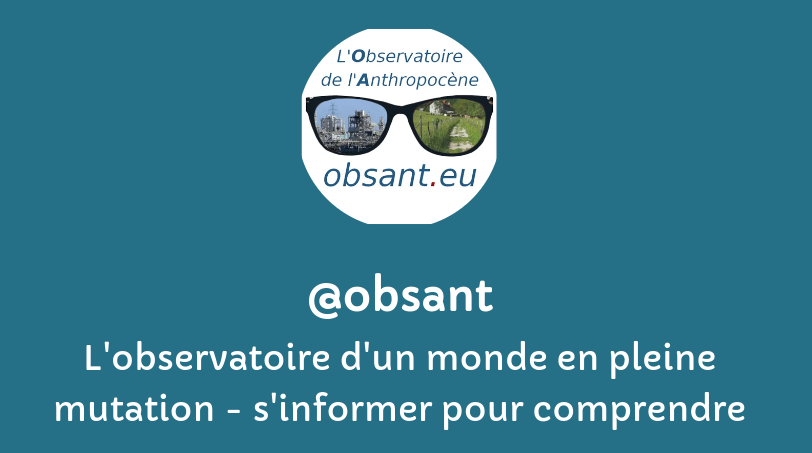filtre:
research
2025
I’m used to environmentalists and futurists writing about The Limits to Growth. I’m less used to seeing investment writers mention research that’s linked to The Limits of Growth. But that’s what Joachim Klement did in his daily newsletter recently. Of course, anyone who writes about Limits of Growth has to do all the usual disclaimers first. This is because the combination of the words “limits” and “growth” in the title produced a lot of critical responses, on a range from straight-up hatchet jobs which misrepresented the book, to people who didn’t appear to understand the systems dynamics model that sat behind it.
2023 set a number of alarming new records. The global mean temperature also rose to nearly 1.5 degrees Celsius above the preindustrial level, another record.A team led by the Alfred Wegener Institute puts forward a possible explanation for the rise in global mean temperature: our planet has become less reflective because certain types of clouds have declined. The work is published in the journal Science.
Microplastics have been found for the first time in human ovary follicular fluid, raising a new round of questions about the ubiquitous and toxic substances’ potential impact on women’s fertility. The new peer-reviewed research published in Ecotoxicology and Environmental Safety checked for microplastics in the follicular fluid of 18 women undergoing assisted reproductive treatment at a fertility clinic in Salerno, Italy, and detected them in 14.
Recent projections suggest that large geographical areas will soon experience heat and humidity exceeding limits for human thermoregulation. The survivability limits modeled in that research were based on laboratory studies suggesting that humans cannot effectively thermoregulate in wet bulb temperatures (Twb) above 26 to 31 °C, values considerably lower than the widely publicized theoretical threshold of 35 °C. The newly proposed empirical limits were derived from the Twb corresponding to the core temperature inflection point in participants exposed to stepped increases in air temperature or relative humidity in a climate-controlled chamber. Despite the increasing use of these thermal-step protocols, their validity has not been established. We used a humidity-step protocol to estimate the Twb threshold for core temperature inflection in 12 volunteers.
The ocean ecosystem is a vital component of the global carbon cycle, storing enough carbon to keep atmospheric CO2 considerably lower than it would otherwise be. However, this conception is based on simple models, neglecting the coupled land-ocean feedback. Using an interactive Earth system model, we show that the role ocean biology plays in controlling atmospheric CO2 is more complex than previously thought. Atmospheric CO2 in a new equilibrium state after the biological pump is shut down increases by more than 50% (163 ppm), lower than expected as approximately half the carbon lost from the ocean is adsorbed by the land. The abiotic ocean is less capable of taking up anthropogenic carbon due to the warmer climate, an absent biological surface pCO2 deficit and a higher Revelle factor. Prioritizing research on and preserving marine ecosystem functioning would be crucial to mitigate climate change and the risks associated with it.
Amid President Donald Trump’s attacks on government scientists and science funding, researchers are arranging rallies to “Stand Up for Science” in Washington, D.C., and nationwide on March 7
As of February 22, over twenty Stand Up for Science protests are scheduled for March 7 throughout the United States. The protests are being organized by fellow scientists who are concerned about the Trump administration’s feelings and actions towards science (see Robles-Gil, 2025 in Science), includ
US government stripping funds from domestic and overseas research amid warnings for health and public safety
En réponse au lancement de Deep Research par OpenAI, Hugging Face développe Open Deep Research, un agent IA open source créé en seulement 24 heures.
Previous health impact assessments of temperature-related mortality in Europe indicated that the mortality burden attributable to cold is much larger than for heat. Questions remain as to whether climate change can result in a net decrease in temperature-related mortality. In this study, we estimated how climate change could affect future heat-related and cold-related mortality in 854 European urban areas, under several climate, demographic and adaptation scenarios. We showed that, with no adaptation to heat, the increase in heat-related deaths consistently exceeds any decrease in cold-related deaths across all considered scenarios in Europe. Under the lowest mitigation and adaptation scenario (SSP3-7.0), we estimate a net death burden due to climate change increasing by 49.9% and cumulating 2,345,410 (95% confidence interval = 327,603 to 4,775,853) climate change-related deaths between 2015 and 2099. This net effect would remain positive even under high adaptation scenarios, whereby a risk attenuation of 50%



